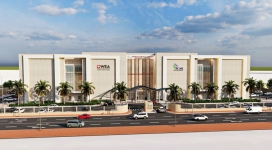More than 2 million Americans participated in the 53rd historical National Day of Prayer, through some 40,000 local events and a 3-hour live-stream broadcast from around the world, on Thursday May 6, 2004.
This year’s theme, “Let Freedom Ring,” was based on the Judeo-Christian scripture: “… proclaim liberty throughout the land and to all its inhabitants” – Leviticus 25:10.
While the events were not exclusively catered toward Christians, a bulk of the observances took place in churches and cathedrals, and were led by various pastors and lay leaders. Tens of thousands of churches got involved by ringing their bells simultaneously at noon to invite their communities to unite in prayer and many churches also held bible studies and services as part of the observance.
According to the Rev. Bob Edgar, general secretary of the National Council of Churches, “Prayer is language that is nonthreatening across those boundary lines of left, middle, and right.”
Edgar expressed that Prayer is “an instrument of pausing to reflect on the level of violence we inflict on each other. My hope is that by stopping to pray, all of us - especially those in the religious middle - will open our hearts to rethink how we can use our superpower status with humility."
There were five main prayer topics listed by the National Day of Prayer Committee, including government, media, education, church and family.
Alan Wolfe, director of the Boisi Center for Religion and American Public Life at Boston College, reminded the attendants that despite the political nature of those topics, the day of prayer not about power struggles.
"Prayer is really about the heart, and political life is about thinking and hard choices," he said, "That's why it's better not to mix these two."
Mark Fried, spokesman for the National Day of Prayer Task Force, agreed, saying that the prayer was about showing gratitude for those who serve us in many ways.
"Since President Bush is in leadership, we're praying that his cause will be successful."
Meanwhile, Bush himself led a prayer service at the White House with several prominent evangelical leaders.
Emphasizing the need for prayer at this sensitive time, Bush urged the nation to seek the guidance of “the creator of the universe” and to align “with God's plan, in so far as we can know it.”
Bush mentioned that America has “been a nation of prayer,” and that today, “we pause to acknowledge our reliance on almighty God, to join in gratitude for His blessings, and to seek His guidance in our lives and for our nation.”
He urged the audience and American people to pray for troops, and to remember that God is on the side of justice.
“God is not on the side of any nation, yet we know He is on the side of justice. And it is the deepest strength of America that from the hour of our founding, we have chosen justice as our goal,” said Bush.
For the first time in history, the National Day of Prayer ceremony aired on Christian cable and satellite TV outlets nationwide. Joining Bush was Shirley Dobson – the director of the event and her husband Jim, Dr. Barry Black - the Chaplain of the United States Senate, Colonel Oliver North- the 2004 National Day of Prayer Honorary Chairman, among others.
The historical National Day of Prayer began in 1775 when the Continental Congress asked the colonies to pray for wisdom in forming a nation. While the tradition carried on through the early presidents, it was not officially declared until 1952, under the service of President Truman.







